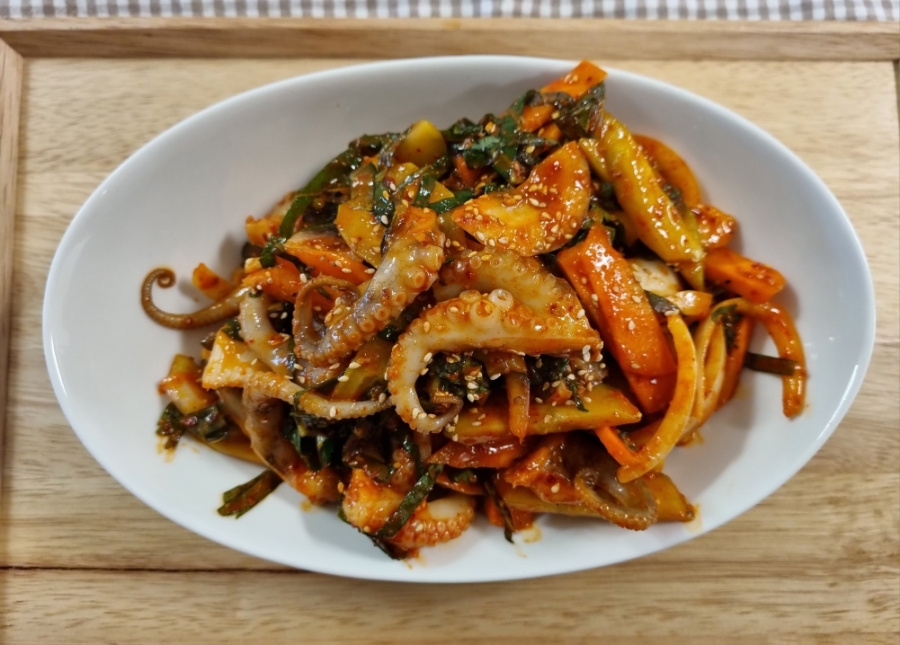
How to make spicy webfoot octopus seasoned webfoot octopus in se
I'm Luna who wants to succeed in dieting with a diet recipe and become a maintenance actor. If you want to enjoy the freshness of the spring-season jjukumi, which has gained weight, you can blanch the cleanly trimmed jjukumi a little and eat it with it. Spring sea medicine spicy and chewy Jugumi seasoned webfoot octopus is a food that is flat in nature and makes everyone feel free and comfortable. And Donguibogam says that webfoot octopus "strengthens the liver detoxification function" and replenishes energy. Also, the fat content is low, so there is no burden even if you eat a large amount. Many people eat stir-fried webfoot octopus. Nutrients are destroyed in the process of stir-frying webfoot octopus. Therefore, it is better to boil ingredients such as shabu-shabu than stir-fried food. So I blanched the webfoot octopus slightly without stir-frying it and put it on the spicy sauce. Then should we start preparing jjukumi?
4 serving
Within 60 minutes
춤추는루나
- Ingredients
-
-
Webfoot octopus1kg
-
Cucumber1ea
-
Carrot30g
-
onion1/2ea
-
Sesame leaf1pack
-
red pepper paste1.5spoon
-
Red pepper powder1spoon
-
Soy sauce2spoon
-
Oligosaccharide1spoon
-
Sugar1spoon
-
sesame salt1spoon
-
ginger powderlittle
-
ground pepperlittle
-
- Cooking Steps
-
STEP 1/9The most messy part of jjukumi is the sucker that needs to be trimmed. Flour is the best way to remove the sucker. If you add flour and rub it as you can see, the flour is adsorbed on the sucker and the dirt can be removed. After that, if you rinse it in water several times, it becomes clean like this. It's the season of , so the jjukumi's head is full of eggs. My family doesn't like intestines. Me too... So I used scissors to remove the intestines.
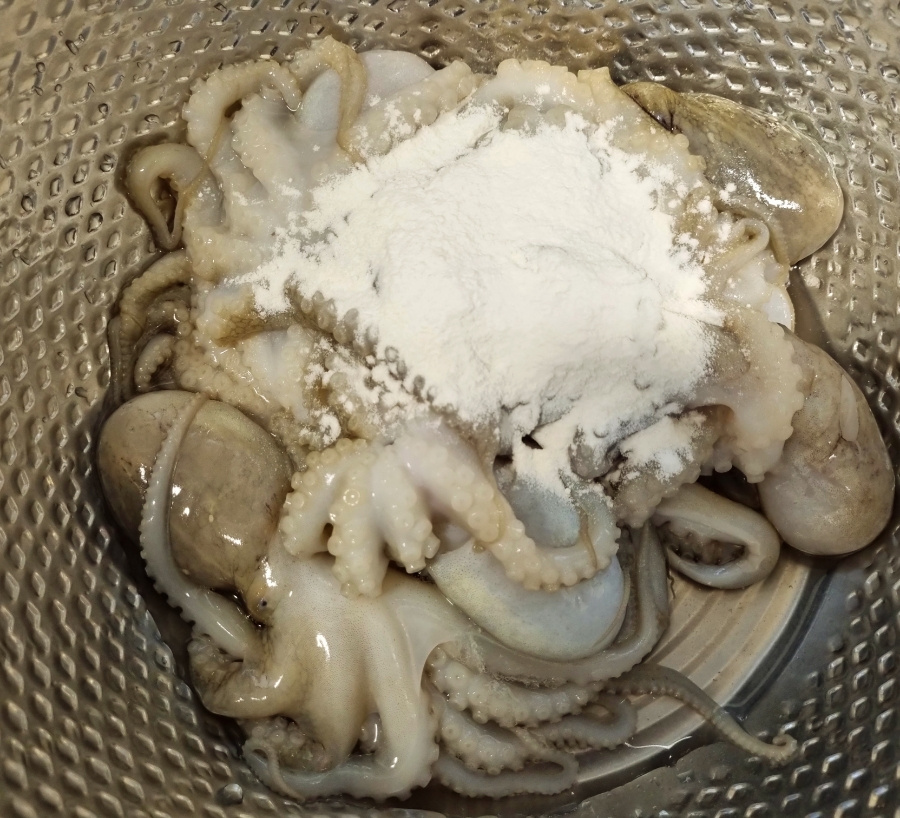 STEP 2/9Cut off the water in a pot and add the jugumi to the boiling water. If you are sensitive to smell, add a little bit of ginger or alcohol. The legs are getting dry as they ripen. If the jjukumi shrivels and the body color turns red, it's all cooked. If you blanch it for too long, it will get tough, so it's better to blanch it lightly. Blanch it and put it in cold water! Rinse it, please. It doesn't taste good if you rinse it a lot.
STEP 2/9Cut off the water in a pot and add the jugumi to the boiling water. If you are sensitive to smell, add a little bit of ginger or alcohol. The legs are getting dry as they ripen. If the jjukumi shrivels and the body color turns red, it's all cooked. If you blanch it for too long, it will get tough, so it's better to blanch it lightly. Blanch it and put it in cold water! Rinse it, please. It doesn't taste good if you rinse it a lot.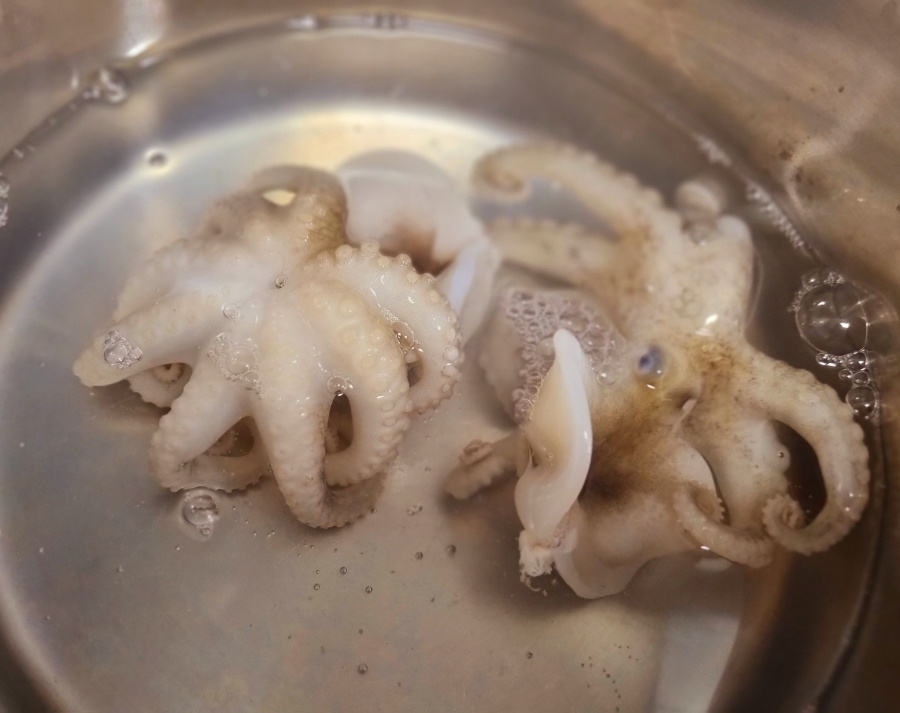 STEP 3/9I cut webfoot octopus into bite-sized pieces with scissors. Jjukumi is slippery, so it's easier to cut it with scissors than with a knife.
STEP 3/9I cut webfoot octopus into bite-sized pieces with scissors. Jjukumi is slippery, so it's easier to cut it with scissors than with a knife.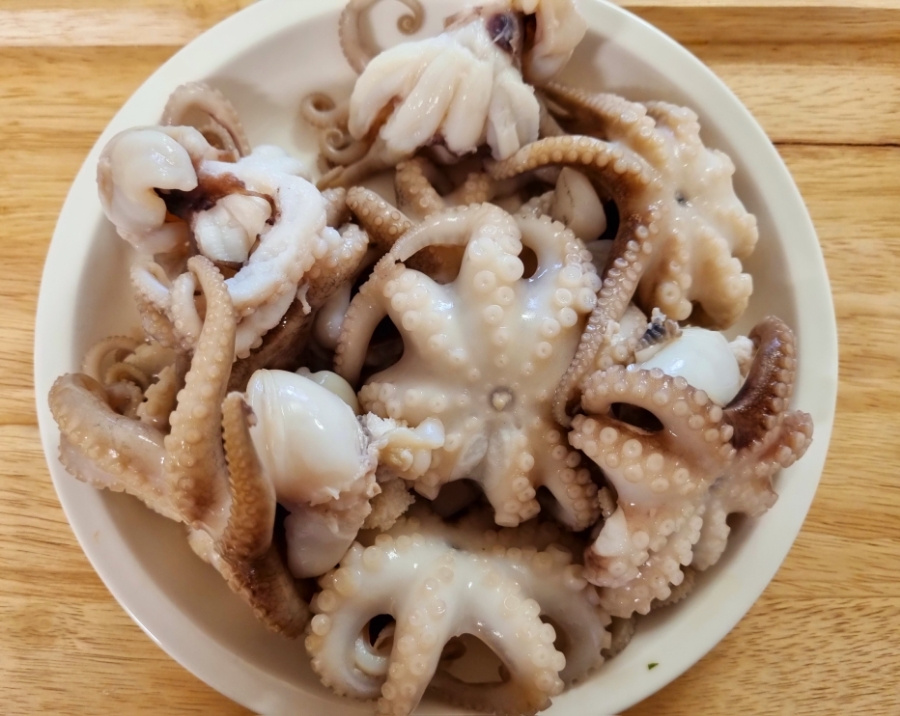 STEP 4/9Shred onions and soak them in cold water for more than 10 minutes to remove the spicy taste.
STEP 4/9Shred onions and soak them in cold water for more than 10 minutes to remove the spicy taste.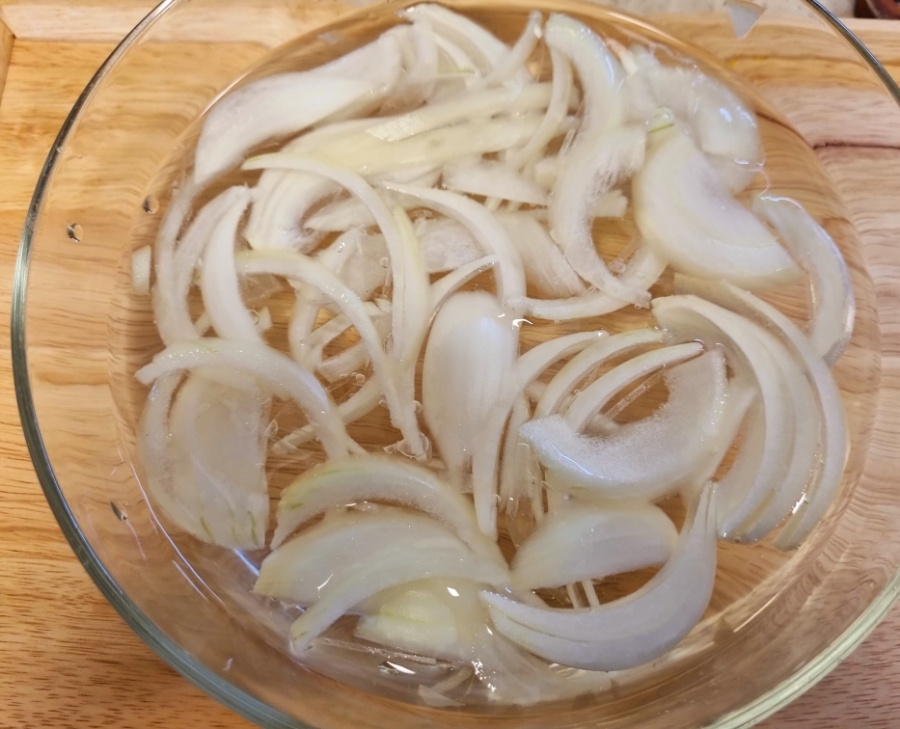 STEP 5/9Soak perilla leaves in water, wash them clean, roll them up, and slice them.
STEP 5/9Soak perilla leaves in water, wash them clean, roll them up, and slice them. STEP 6/9Cut cucumbers and carrots into bite-size pieces.
STEP 6/9Cut cucumbers and carrots into bite-size pieces.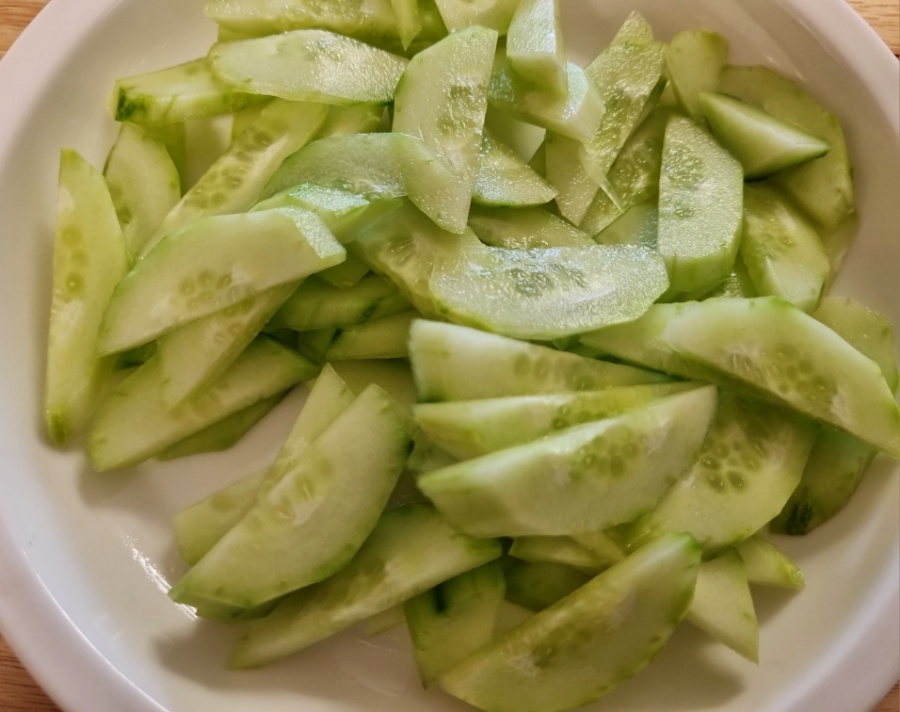 STEP 7/9Add and mix all seasoning ingredients such as red pepper paste, red pepper powder, soy sauce, sugar, oligosaccharide, sesame salt, and pepper.
STEP 7/9Add and mix all seasoning ingredients such as red pepper paste, red pepper powder, soy sauce, sugar, oligosaccharide, sesame salt, and pepper.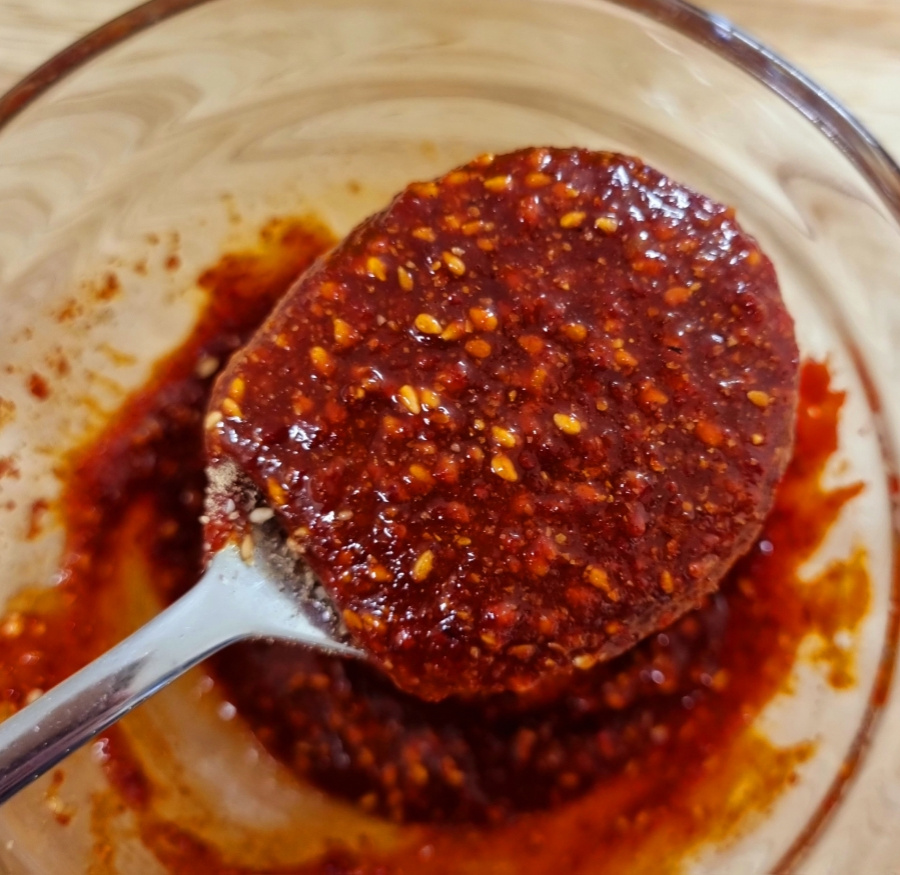 STEP 8/9In a large bowl, mix all the ingredients together and mix well.
STEP 8/9In a large bowl, mix all the ingredients together and mix well.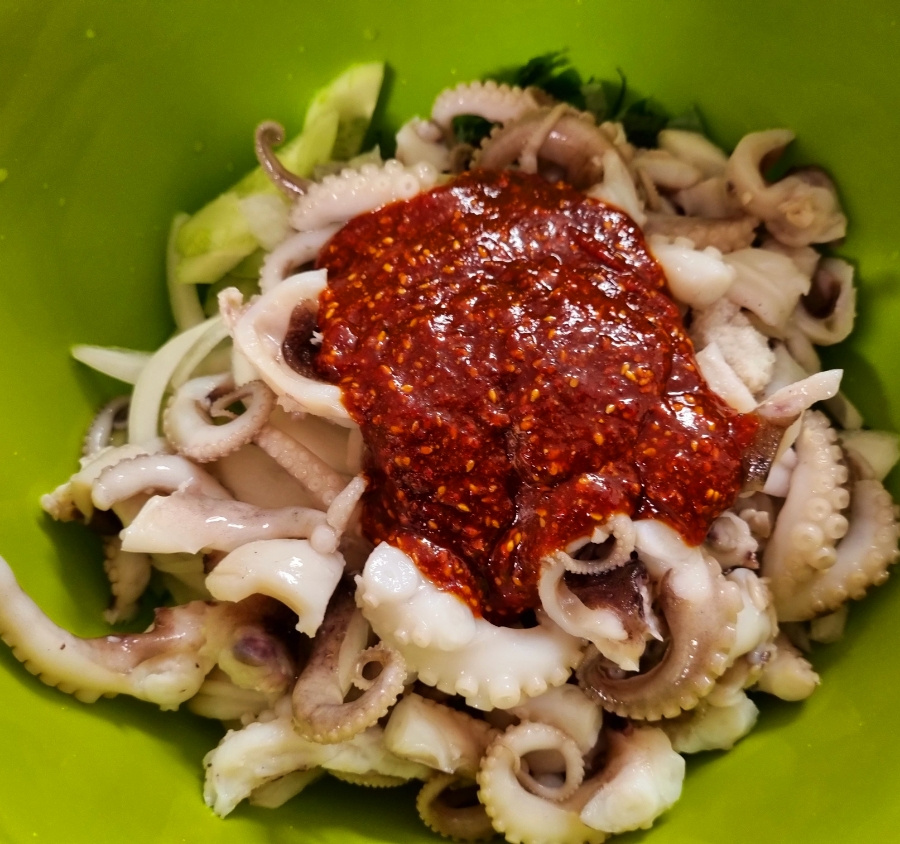 STEP 9/9Put it on a pretty plate and sprinkle sesame seeds. It's done!
STEP 9/9Put it on a pretty plate and sprinkle sesame seeds. It's done!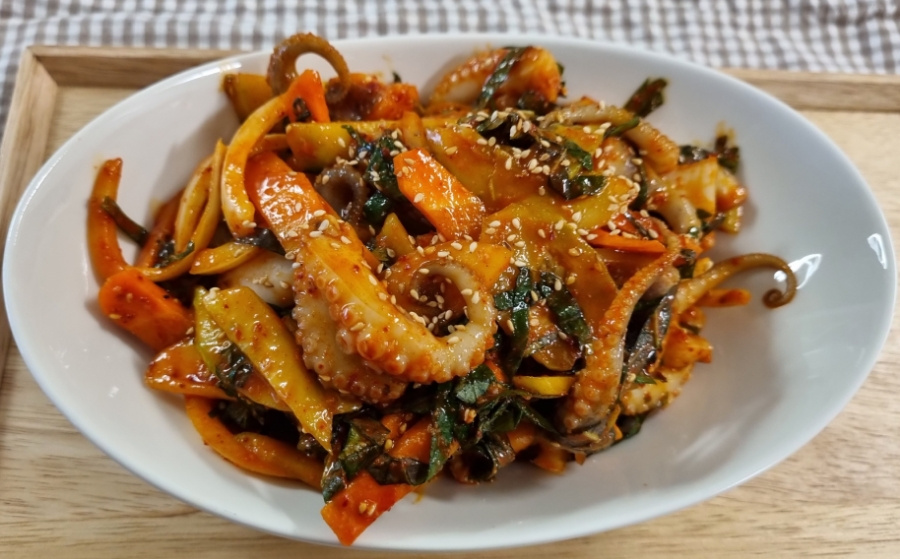 It is said that stir-frying Jjukumi will destroy nutrients, so enjoy it with seasoned Jjukumi!
It is said that stir-frying Jjukumi will destroy nutrients, so enjoy it with seasoned Jjukumi!
- stir-fried Rice Cake Recommended recipe
-
-
1
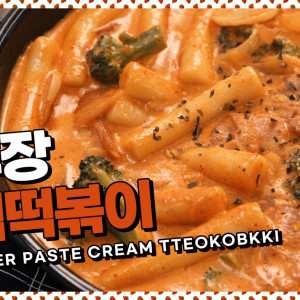 This is the Rose of Korea! Soft and spicy red pepper paste cream4.90(31)
This is the Rose of Korea! Soft and spicy red pepper paste cream4.90(31) -
2
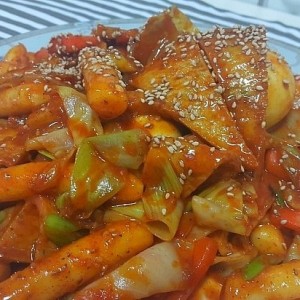 How to make spicy tteokbokki deliciously4.90(39)
How to make spicy tteokbokki deliciously4.90(39) -
3
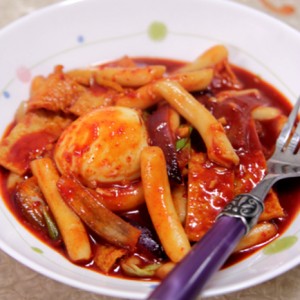 Tteokbokki with soup made according to the TV recipe4.79(43)
Tteokbokki with soup made according to the TV recipe4.79(43) -
4
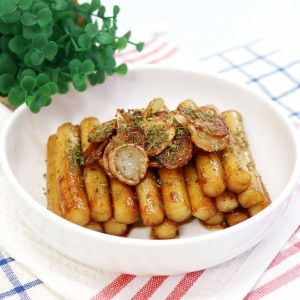 [Simple snack making] Garlic butter tteokbokki, garlic tteokbokk4.88(48)
[Simple snack making] Garlic butter tteokbokki, garlic tteokbokk4.88(48)
-
- Bibimbap Recommended recipe
-
-
1
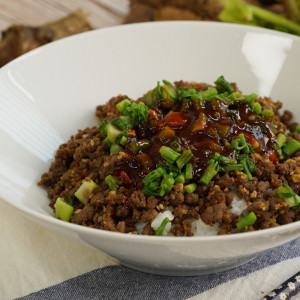 Beef bibimbap filled with the smell of spring while preparing fo5.00(13)
Beef bibimbap filled with the smell of spring while preparing fo5.00(13) -
2
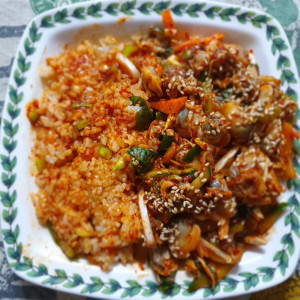 Cockle bibimbap5.00(8)
Cockle bibimbap5.00(8) -
3
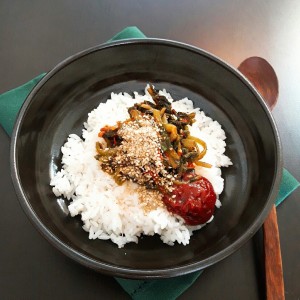 Young radish bibimbap, a simple meal5.00(10)
Young radish bibimbap, a simple meal5.00(10) -
4
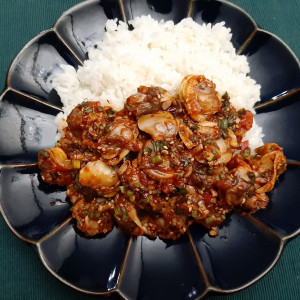 Eating cockle bibimbap at home4.98(103)
Eating cockle bibimbap at home4.98(103)
-